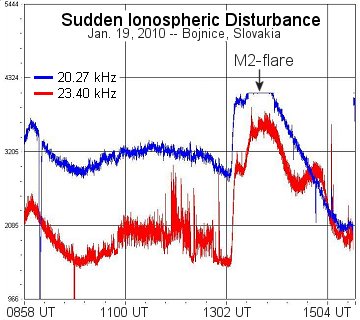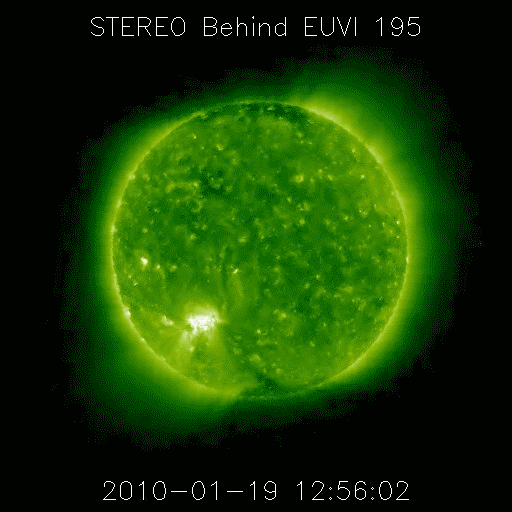Ionospheric Distrubance
Posted by
JAC on 1/20/2010, 6:21 am
Yesterday's M2-class solar flare bathed Earth's upper atmosphere in X-rays and caused a wave of ionization to sweep over Europe.
This actually improved the propagation of low-frequency radio signals, which use the ionosphere as a reflector to skip over the horizon.
A SID monitor operated by Rudolf Slosiar in Bojnice, Slovakia, recorded the surge in signal strength:

"SID" stands for Sudden Ionospheric Disturbance, and a "SID monitor" is a radio receiver that monitors ~20 kHz signals from distant transmitters. "My system clearly detected the effects of the solar flare," says Slosiar. "The decay of the signal shows that it took about 72 minutes for the ionosphere to recombine [and relax to its pre-flare state]."
On Jan. 19th at 1340 UT, Earth-orbiting satellites detected the strongest solar flare in almost two years.
The M2-class eruption came from old sunspot 1039 behind the sun's eastern limb.
http://www.spaceweather.com/glossary/flareclasses.html?PHPSESSID=ljiinttmpqjuuuccbaen27o220
NASA's STEREO-B spacecraft recorded this extreme ultraviolet movie of the blast

Considering the fact that the sunspot was not even visible from Earth at the time, the flare was probably much stronger than its M2 classification would suggest.
This active region has produced at least four significant eruptions since Jan. 17th.
Today, for the first time since the fireworks began, the active region is visible from Earth.
It is emerging over the sun's southeastern limb as shown here.

|
99
In this thread:
Ionospheric Distrubance - JAC, 1/20/2010, 6:21 am Post A Reply
This thread has been archived and can no longer receive replies.


